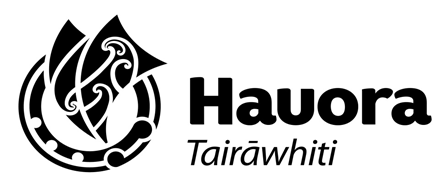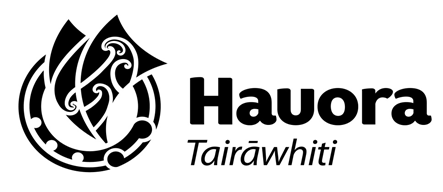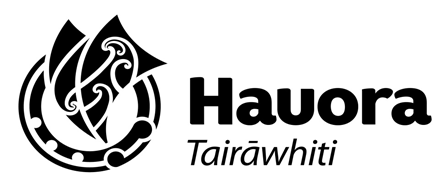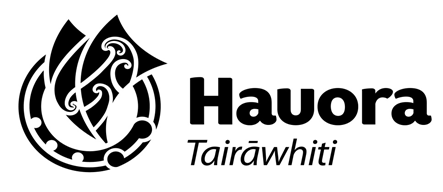
Sponsor: Clinical Board
Name: Enabler Use
ORGANISATIONAL
GUIDELINE:
ENABLER USE
AUTHORITIVE SOURCE:
NZS 8134. 2:2008 Health and Disability Services (Restraint Minimisation and Safe Practice)
Standards
AUTHOR:
Restraint Minimisation and Safe Practice Committee
SCOPE:
All clinical areas in Clinical Care Groups
To inform clinical staff of the organisations definition of an enabler, the differences between an
enabler and restraint, and when to implement an enabler.
To ensure that enabler use practice at Hauora Tairawhiti meets the required standard (NZS
8134.2:2008
DEFINITIONS:
An enabler is defined as any equipment, device or furniture, voluntarily used by a
patient/consumer following appropriate assessment that limits normal freedom of movement.
The intent or purpose of the use of an enabler is to promote and/or maintain independence,
comfort and safety.
Restraint is the use of any intervention by a service provider that limits a patients/ consumers
normal freedom of movement. This includes personal restraint, physical restraint, environmental
restraint and seclusion. (Seclusion is restricted to Adult Mental Health and Addiction Services
only). The use of restraint is a clinical decision and has significant legal and ethical implications.
POLICY STATEMENT:
The use of an enabler should be the least restrictive option to meet the consumer’s needs.
The difference between enabler use and restraint is that the use of the an enabler is voluntary
i.e. there is informed consent involving effective communication, full information and freely
given competent consent (Rights 5, 6 & 7 of the Code of Health and Disability Services
Consumers’ Rights 1996).
The use of an enabler may be initiated by either the consumer who is competently able to, or the
clinical staff responsible for the care of the patient, and be implemented following consensus
between the two parties. Family may support the decision, but cannot approve (or request) the
use of an enabler without the consent of the consumer.
In situations where the consumer is not competent to consent, and the use of a device,
equipment or furniture is clinically justified to prevent injury or harm to patient, then in this case
family can give informed consent, if not this constitutes restraint and an incident form
must be
completed.
The list of the approved devices, equipment and furniture that can be used as enablers at Hauora
Tairāwhiti is attached (Appendix 1). It is not the equipment itself that defines its purpose, but
Author: Restraint Minimisation and Safe Practice Committee Date of first approval: Sept 2011
Authorised By: Chairperson – RM&SPC Date last review completed: March 2016 Page: 1 of 7
Version#4

Sponsor: Clinical Board
Name: Enabler Use
the intention for its use e.g. bedrails used voluntarily by a patient to assist bed mobility or
prevent falls is an enabler.
Hauora Tairawhiti enabler use practices comply with the requirements of New Zealand Standard
8134.2:2008 – Health and Disability Services (Restraint Minimisation and Safe Practice)
Standards.
Author: Restraint Minimisation and Safe Practice Committee Date of first approval: Sept 2011
Authorised By: Chairperson – RM&SPC Date last review completed: March 2016 Page: 2 of 7
Version#4

Sponsor: Clinical Board
Name: Enabler Use
PROCEDURE:
IDENTIFYING
On admission or following any decline in condition and always in collaboration with patient.
PHYSICAL FACTORS TO CONSIDER
Following anaesthesia or sedation e.g. bedrails to maintain safety
Assistance with body balance e.g. walking frame, pillows/pads to promote/maintain safety &
independence
Assistance with bed mobility e.g. bedrails to promote independence
Assistance with positioning or alignment e.g. foot-strap to keep foot on wheelchair footplate,
securing straps used for CT scanning or lithotomy positioning, traction equipment to
promote/maintain safety & comfort
Assistance with activities of daily living e.g. fixed food tray on chairs to promote
independence
When transporting consumers e.g. Bedrails/cot sides to maintain safety
PSYCHOLOGICAL FACTORS TO CONSIDER
Consumer has fear of falling out of bed or chair e.g. bedrails, lap belt to promote/maintain
safety
Consumer has concerns about maintaining independence e.g. use of Bedrails/cot sides to
change position in bed
INFORMED CONSENT
Discuss and agree Enabler strategy with consumer/whanau & multidisciplinary team.
DOCUMENTATION
Document agreement and consent in the consumers care plan. Include monitoring and evaluation
processes to be used while enabler in use.
Author: Restraint Minimisation and Safe Practice Committee Date of first approval: Sept 2011
Authorised By: Chairperson – RM&SPC Date last review completed: March 2016 Page: 3 of 7
Version#4

Sponsor: Clinical Board
Name: Enabler Use
EVALUATION:
Audit will be undertaken six monthly by the ward/department Quality Co-ordinator using the Enabler
Audit forms. (Appendix 2) This will be presented to the Restraint Committee and recorded in the
minutes of the meeting.
REFERENCE DOCUMENTS:
Health and Safety in Employment Act 1992
Health and Disability Services (Safety) Act 2001
Human Rights Act 1993
Intellectual Disability (Compulsory Care and Rehabilitation) Act 2003
Mental Health (Compulsory Assessment and Treatment) Act 1992
Privacy Act 1993
Treaty of Waitangi Act 1975
Code of Health and Disability Services Consumer’s Rights 1996
Criminal Procedures (Mentally Impaired Person) Act 2003
Protection of Personal and Property Rights Act 1988 (PPPR Act)
Crimes Act 1991
Employee Relations Act 2000
Care of Children Act 2004
The New Zealand Bill of Rights 1990
RELATED DOCUMENTS: Hauora Tairāwhiti Informed Consent Policy
Hauora Tairawhiti Restraint Minimisation Policy and Procedures
Hauora Tairawhiti Use of Bedrails/cot sides Guidelines
Hauora Tairawhiti Approved Enabler Equipment (Appendix 1)
Enabler Audit form and supporting information document (Appendix 2)
REFERENCES:
NZS 8134. 2:2008 Health and Disability Services (Restraint Minimisation and Safe Practice)
Standards
Restraint Minimisation and Safe Practice
http://www.cdhb.govt.nz/quality/documents/restraints.pdf
Lippincott Procedures and Skills Website
http://procedures.lww.com/lnp/procedureSelect.do#/all
Date of Approval: March 2016
Next Review Date: March 2019
Author: Restraint Minimisation and Safe Practice Committee Date of first approval: Sept 2011
Authorised By: Chairperson – RM&SPC Date last review completed: March 2016 Page: 4 of 7
Version#4

Sponsor: Clinical Board
Name: Enabler Use
APPENDIX 1:
ENABLERS USED WITHIN HAUORA TAIRAWHITI
Enablers used within Hauora Tairawhiti include but not limited to:
Paediatric Splints
Mittens / Boxing Glove bandaging
IV splints
Bedrails/ Cot sides
Specialist Chair
Leg Straps
Lap Belt
Author: Restraint Minimisation and Safe Practice Committee Date of first approval: Sept 2011
Authorised By: Chairperson – RM&SPC Date last review completed: March 2016 Page: 5 of 7
Version#4

Sponsor: Clinical Board
Name: Enabler Use
APPENDIX 2:
ENABLER AUDIT TOOL AND RELATION TO STANDARD
Q 1 -
Reason for Enabler use identified: Nursing assessment including falls risk assessment
and care plan completed; information from allied health, information from family members
considered.
Q2-
Type of enabler identified: this can relate to bedrails, chair tables, lap belts, pillows etc,
also consider cot side use for securing bells within easy reach.
Q3 -
Informed consent: this should be completed in line with TDH policy; it is required and
should be documented.
Patient request for enabler eg bedrails in this case is regarded as consent
It can be received verbally (documented as such) or indicated by patient signature with
validation by nursing staff.
In some case family/whanau provide consent and are made aware of reasons and can
provide information relating to reasons for enabler use eg avoiding harm. At all times
promote and protect the interest, safety and well being of all involved and aware of cultural
values and beliefs.
Any unauthorised restriction is regarded as restraint Q4-
Date enabler use initiated is documented; date noted in care plan/ on-going review in
progress notes, aware of protecting the dignity of the patient at all times
Q5 -
Care plan is completed on a daily basis: Objective assessment identified within care
plan document, appropriate review and referral
*appendix 2 and data collection sheet reviewed Oct 2016
Author: Restraint Minimisation and Safe Practice Committee Date of first approval: Sept 2011
Authorised By: Chairperson – RM&SPC Date last review completed: March 2016 Page: 6 of 7
Version#4

Sponsor: Clinical Board
Name: Enabler Use
Data Collection Sheet
Date:
Department:
Auditor(s):
Standard: Restraint Minimisation & Safe Practice
Enabler Use
Methodology:
Insert NHIs below
Totals
Patients will be selected for Enabler
= Met
X = Not Met
x
audit activity based on visualisation of
an enabler in use within the ward/unit
setting
Criteria:
Reason for the use of identified
Type of enabler is identified
Informed Consent documented
Date of enabler initiation is
documented
Care plan is completed on a daily basis
Auditors Comment:
*appendix 2 and data collection sheet reviewed Oct 2016
Author: Restraint Minimisation and Safe Practice Committee Date of first approval: Sept 2011
Authorised By: Chairperson – RM&SPC Date last review completed: March 2016 Page: 7 of 7
Version#4






